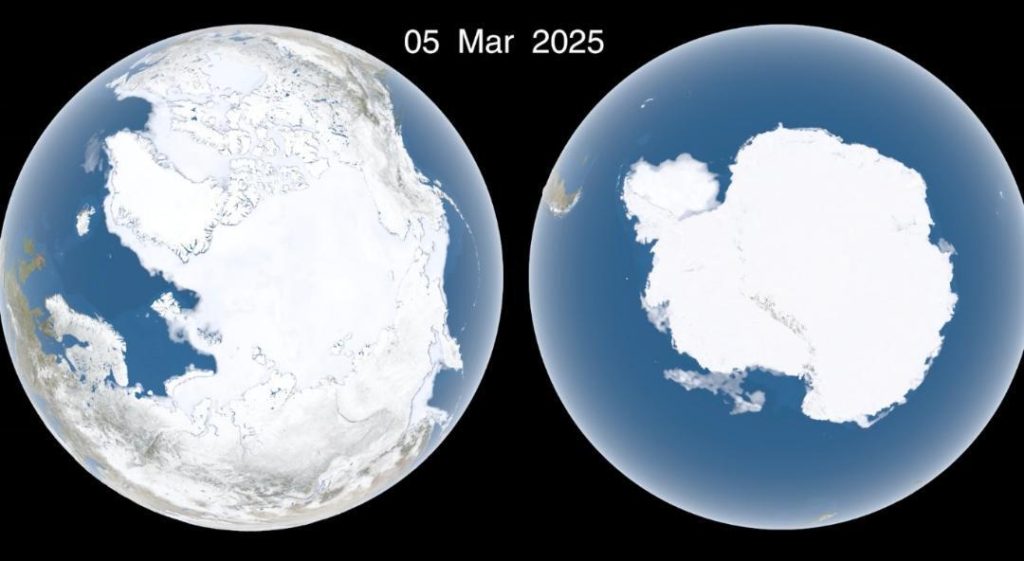
Winter Sea Ice in the Arctic Hits a Record Low, Says NASA
The Arctic winter sea ice has hit a record low, according to NASA and the National Snow and Ice Data Center (NSIDC). The record low marks a significant milestone in the ongoing trend of Arctic sea ice decline, with far-reaching implications for the global climate and ecosystems.
As reported by NASA, the Arctic winter sea ice extent reached a record low of 5.53 million square miles (14.27 million square kilometers) on March 13, 2023. This marks a significant departure from the average ice cover levels between 1981 and 2010, which stood at 6.85 million square miles (17.74 million square kilometers).
The record low ice extent is a staggering 1.32 million square kilometers below the average levels, highlighting the alarming rate of Arctic sea ice decline. The data from NASA and NSIDC shows that the Arctic winter sea ice extent has been declining at a rate of approximately 13% per decade since 1980.
So, what does this record low sea ice extent mean? Firstly, it underscores the pressing issue of climate change. The rapid decline of Arctic sea ice is a clear indication of the warming planet, with the Arctic warming at a rate twice as fast as the global average. This warming is primarily caused by human activities, such as the burning of fossil fuels and deforestation, which release large amounts of greenhouse gases into the atmosphere.
The melting of sea ice has far-reaching consequences for the global climate. As the Arctic ice melts, it exposes more of the dark ocean surface, which absorbs more solar radiation and accelerates the warming process. This, in turn, contributes to the melting of glaciers and ice sheets, leading to sea-level rise and more extreme weather events.
In addition to the climate implications, the decline of Arctic sea ice has significant ecological and economic consequences. Many marine species, such as polar bears, walruses, and seals, rely on the sea ice for their survival. As the ice melts, these animals are forced to adapt to new habitats, which can have devastating impacts on their populations and ecosystems.
The decline of Arctic sea ice also has significant economic implications. The melting of sea ice opens up new shipping routes and potentially viable resources for oil and gas extraction. However, this also poses significant challenges for indigenous communities, who rely on the sea ice for hunting, fishing, and transportation. The melting of sea ice also threatens the cultural heritage of these communities, as their traditional ways of life are disrupted.
So, what can be done to mitigate the effects of the record low sea ice extent? Firstly, it is essential to address the root cause of climate change by reducing greenhouse gas emissions and transitioning to renewable energy sources. This can be achieved through a combination of government policies, individual actions, and technological innovations.
Secondly, it is crucial to support research and monitoring efforts to better understand the impacts of climate change on Arctic sea ice. This includes continued monitoring of sea ice extent, thickness, and coverage, as well as research into the ecological and economic consequences of the decline.
Finally, it is essential to engage with indigenous communities and listen to their concerns and perspectives on the impacts of climate change. By working together, we can develop solutions that prioritize the well-being of both people and the planet.
In conclusion, the record low Arctic winter sea ice extent is a stark reminder of the urgent need to address climate change. As we move forward, it is essential to prioritize research, action, and collaboration to mitigate the effects of climate change and protect the Arctic and its inhabitants.
Source: https://www.nasa.gov/earth/arctic-winter-sea-ice-at-record-low/






